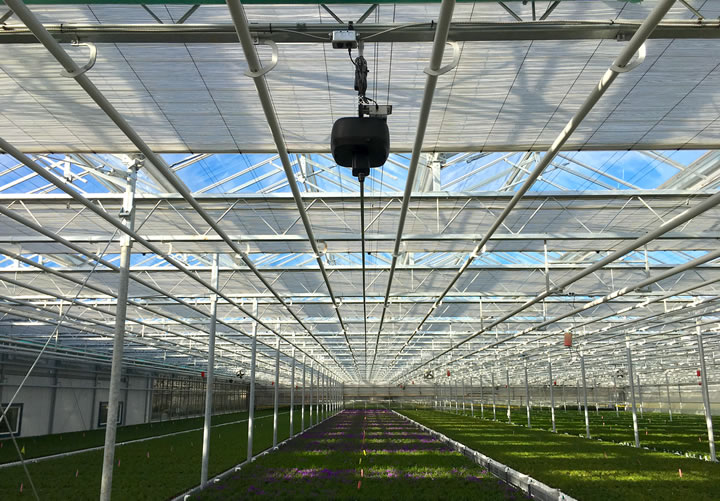Perfecting IPM: Going beyond the crop walk and sticky cards

Sticky cards are everywhere in your greenhouse. They have to be. If you don’t have yellow sticky cards, you probably have sticky tape. You check them once, maybe twice a week depending on what you’re growing. The question always is, what’s the threshold you’re willing to accept before you engage biologicals or pesticides? And, by the time you reach your limit of aphids, whiteflies, fungus gnats, or leaf miners, can you easily control the outbreak?
The focus is on finding the problem as soon as possible. One company iUNU, has a system that uses AI to help with early pest detection. The system “learns” what healthy crops and plants look like, recognizes when anomalies occur, and then sends an alert when something is amiss. With optical scanners that move above the greenhouse, the system performs remote crop walks as often as necessary. There’s a feature allows you to see the entire greenhouse or scroll down to view the plants that are infested.
“AI is the link between preventative and curative application methods,” a horticulture grower in the Northeast said in assessing the value to him. “AI-generated detection alerts me when plants show signs of damage from insects, as well as finding insects in my upper canopy. If I have root aphids or spider mites, where the insects are found on my roots or the underside of my leaves and deeper in my canopy, my only option is to set yellow identification cards within my canopy. The application of these cards itself can spread insects throughout my facility. Generally, unless I am consistently changing cards it usually means from the point of identifying the problem then laying the cards, I’m already deep into the population boom of my pests. Then, I have to wait 3-7 days to analyze the cards for probable infection rates. I lose time, which means I lose money, which means sometimes I don’t make the best decisions.”
.jpg)
He sees his technology system as a partner that helps him optimize his growing operations.
“By mixing my preventative techniques with AI diagnostics, I’m either proving my methods successful, or I’m finding the gaps in my cultivation plan or infrastructure that caused the pest population in the first place. Pest detection also works with beneficial insects. If I continuously supply lacewing or ladybug larvae, the system helps identify if their populations exist or have disappeared, both necessary tools to identify pest population density. In a curative response, if the scanners alert me that pest exists, I can quickly quarantine the area, house, or facility to eradicate the population before it begins to spread. I no longer need workers to enter the area multiple times to collect cards, and then also to implement my IPM protocol for certain pests.”
Comments (0)
This post does not have any comments. Be the first to leave a comment below.
Featured Product

